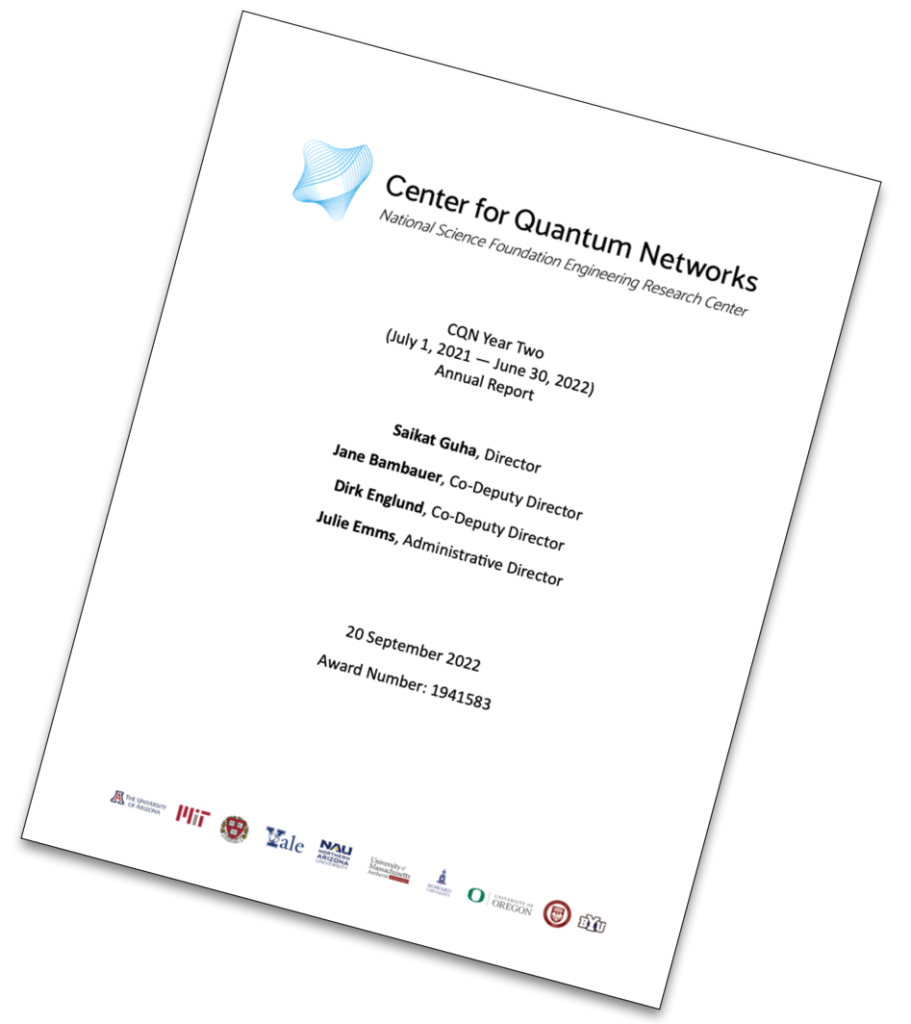CQN Year Two Summary
In September 2022, CQN submitted our second annual report to NSF on the progress made at the Center during the previous year. The complete report is quite detailed. We’ve excerpted the Project Summary here for public viewing.

Goals
The NSF-ERC Center for Quantum Networks (CQN) is envisioned to develop the entire technology stack to upgrade the internet to be able to reliably carry quantum data across the globe, to serve diverse applications across many user groups simultaneously, while meeting the dynamic application-driven demands of the quality-of-service of this new service of quantum communication. CQN aims to lay the foundations for a socially responsible quantum Internet and a diverse quantum engineering workforce, which will spur new technology industries and a competitive marketplace of quantum service providers and application developers.
Programs
CQN’s research program focuses on building fault-tolerant quantum repeaters using long-lived scalable spin-based quantum memories capable of universal quantum logic and efficient interfaces to photonic qubits, supported by a network protocol stack and algorithms to support transformative new applications. CQN’s engineering workforce development (EWD) program’s impact spans K-12, undergraduates (including two Pima Community College students working on superconducting nanowire detectors at one of our MIT labs), graduate (e.g., through our MS program in QISE), and Industry. CQN’s innovation ecosystem program brings in 14+ industry partners into a dynamic ecosystem that has spun out research, assisted with the Applications Roadmap process, Perfect Pitch mentoring, and more. CQN’s diversity and culture of inclusion (DCI) program used Quantum Engineering and Science Teams (QuESTs) — cross-institution mission-focused working groups — to deliver on DCI- and EWD-focused missions in a manner to infuse a culture of inclusion in the center, and beyond.
Science and Engineering Achievements
- In year 2, CQN made progress on many hard ‘mundane’ engineering challenges, as well as several fundamental scientific breakthroughs in both theory and experiments, across all the research thrusts.
- Mikhail Lukin’s group demonstrated photon-mediated spin-spin entanglement via an efficient method for entangling emitters with a single-photon-heralding based parity measurement.
- In our Boston testbed, we demonstrated quantum state transfer over 43 km, and demonstrated a scalable integrated photonics platform operating at 1.3°K as an efficient microwave and optical interface for spin-based quantum memories in a plug-and-play architecture.
- Our Tucson testbed connects more than 10 laboratories, including one 800m free-space link, equipped with on-chip and bulk photonic entanglement sources, single-photon detectors, and switches.
- Dirk Englund and Saikat Guha’s groups developed an alternative way to herald remote spin-spin entanglement, using time-spectral-multiplexed heralded SPDC-based source of entangled photon pairs and a spectral mode conversion technique to load these entangled photons into our memories. Brian Smith of Oregon realized the source portion of this module. This method could significantly outperform entanglement generation via remote spin-photon entanglement sources, and linear-optical entanglement swap to herald entanglement.
- The CQN team—spanning the groups of Guha, Jiang, Towsley, Tassiulas, Englund, Narang and Vasic–have made tremendous progress on: (1) network protocols for entanglement routing, (2) novel qubit modulation formats for quantum repeaters, (3) codes and realizations thereof for efficient entanglement distillation, (4) scheduling communication flows in a network, (5) quantum network tomography algorithms and protocols and (6) design and performance evaluation of satellite-based quantum networks.
Other Achievements
- Led by EWD Director Inès Montaño, CQN implemented its EWD initiative: SPARCQS – Sparking Curiosity in Quantum Science–which takes hands-on quantum science experiences to schools and communities.
- Jane Bambauer, our Deputy Director of Broader Impacts, worked with UCLA, Yale, and the Munich Technical Institute to host the first Trans-Atlantic Quantum Forum, where authors of 18 original works, including CQN’s Quantum Society fellows, presented on social and political consequences of emerging quantum technologies.
- Fourteen companies and government laboratories have joined CQN’s Industry Partnership Program (IPP).
- We have established customized research opportunities for Diamond level IPP members, to work with CQN faculty and students. One such project has led to a quantum secure communications demonstration.
- The DCI QuEST program has turned out several examples of convergence across campuses to develop short courses, a campus-wide SLC-led student retreat, and multiple trainings and seminars on culture of inclusion in interdisciplinary research environments.

